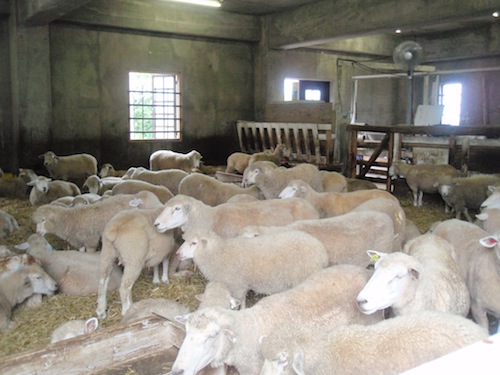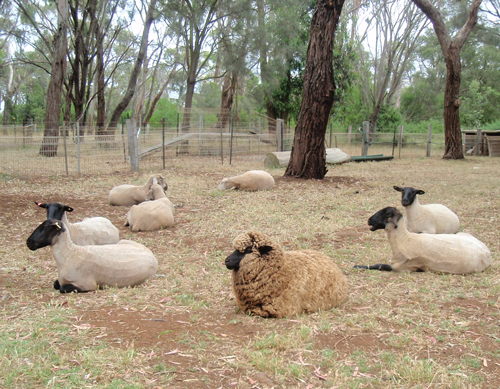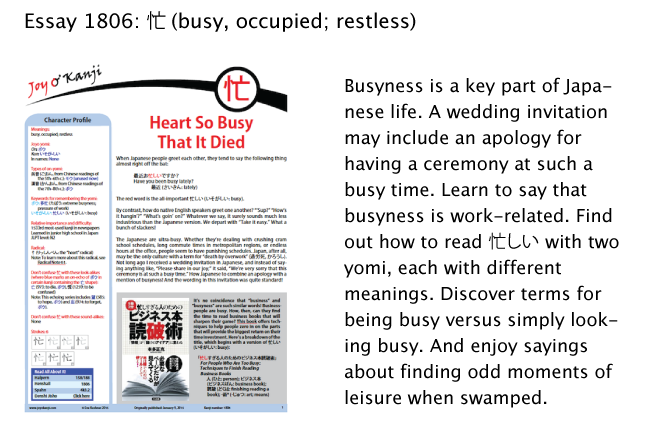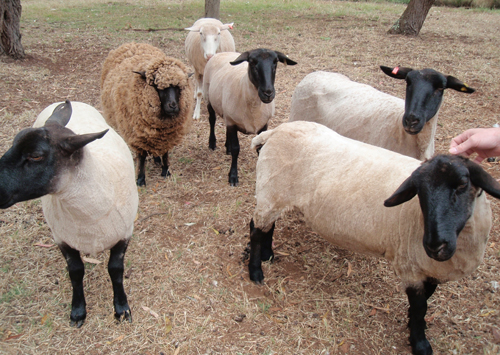Happy Flocking New Year
Saying "Happy New Year" feels farcical to me right now. It truly hasn't been very happy so far. For all those in my household, it started with a bad car accident in the middle of nowhere. (We're perfectly fine. The car is not.) And then there's misery emanating from France and no shortage of other depressing news.
When life becomes this painful, two things cheer me up: kanji (no surprise there!) and animals. If you combine them, well, so much the better! Besides, what better way to usher in the Year of the Sheep than by thinking about groups of animals?
For some reason, my recent conversation with my language partner veered off into the matter of animal names in Japanese, and we enjoyed sorting out which ones have kanji names and which are loanwords rendered in katakana, such as these:
ハムスター: hamster
チーター: cheetah
ライオン: lion
I don't know why, but saying ハムスター makes me rather giggly and even giddy! But we've gathered here to ... Oh, my, that sounds grim! It isn't. I merely want to say that we're here to think about kanji, so I'll present a kanji-related game about animals.
Consider this example:
駝鳥 (ダチョウ: ostrich) hunchback + bird
Although people usually write this term in katakana, seeing it in kanji enables us to enjoy the breakdown and to find a horse (馬) and a bird (鳥) inside an ostrich. The horse, of course, is a component of the non-Joyo 駝, not an autonomous kanji as 鳥 is. But let's dispense with such distinctions.
Each of the animals in the first column below has "swallowed" an animal from the second column. That is, every animal in the first column contains one from the second column, either as a stand-alone kanji or as a component. Match the animals, using items from the second column as often as you like.
| The Swallowers | The Swallowed |
| 1. hippopotamus | a. cow |
| 2. dinosaur | b. sheep |
| 3. rhinoceros | c. dragon |
| 4. zebra | d. horse |
| 5. goat | e. fish |
| 6. camel | f. bird |
| 7. whale | g. pig |
| 8. dolphin |
I'll block the answers with a sheep photo.

Photo Credit: Eve Kushner
I took this shot at a sheep farm in the Rokko Mountains above Kobe.
By the way, the Japanese media are ushering in the Year of the Sheep in a big way. So far I've seen three sheepish articles:
• One in Japanese is about a Nagoya shrine called 羊神社 (ひつじじんじゃ) or Sheep Shrine, which has at least one sheep statue. People flocked (groan!) to the shrine for the New Year.
• Another article in Japanese shows how sheep in Chiba Prefecture have collectively formed the kanji 未! Among its many meanings, this character represents "sheep" in the Chinese zodiac. The sheep may have been intelligent enough to accomplish this on their own, but someone helped the situation along by putting bowls of food in a certain position.
• A third article in English explains why Haruki Murakami fans have gathered at a sheep farm in Hokkaido.
By the way, Japanese sheep say メエ, not baaa.
Okay, here are the answers!
1.d. A 河馬 (カバ: hippopotamus) turns out to be a river (河) horse (馬)!
2.c. A 恐竜 (きょうりゅう: dinosaur) contains a dragon (竜). I've explained the etymology of 恐竜 in essay 1167 on 恐 (fear; dread; awe).
3.a. The non-Joyo 犀 (サイ: rhinoceros) has swallowed a cow (牛)!
4.d. A 縞馬 (シマウマ: zebra) contains a whole horse (馬).
5.b. A 山羊 (ヤギ: goat) has swallowed a sheep (羊).
6.d. A 駱駝 (ラクダ: camel) has swallowed two horses, which might account for its two humps! Both kanji are non-Joyo. Incidentally, we saw 駝 in the term for "ostrich."
7.e. A 鯨 (クジラ: whale) has swallowed a fish (魚), which is quite likely in real life.
8.g. An 海豚 (イルカ: dolphin) contains a pig (豚)!!! Bet you didn't see that coming! The word 海豚 comes directly from Chinese. Several sources say that the Chinese once thought dolphins looked like pigs!
Finally, keep in mind that when you combine a fish (魚) and sheep (羊), you produce not an animal but a kanji for "fresh"—namely 鮮.

Photo Credit: Eve Kushner
Sheep at a farm in Australia.
I have all kinds of sheepish things lined up for Joy o' Kanji, starting with next week's release of essay 2045 on 羨 (envy). For now, I'd like to introduce the newest essay:

I don't know about you, but I'm already so busy that this kanji seems ultra-appropriate. How is this possible in the Year of the Sheep? I thought sheep were the type to take it easy!
Have a great weekend! And Happy Flocking New Year!

Photo Credit: Eve Kushner
Hey, sheep in Australia like to line up, too!

Comments